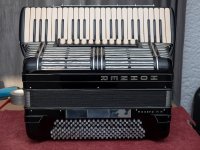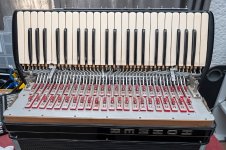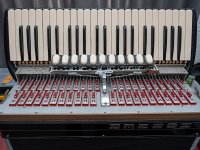FrankieFrank
Newbie
Hello All !!
I decided to re-visit my "bassetti' playing days of 50 years ago (long gone Giulietti Classic Transformer) and have just acquired a Morino VI M - my first Hohner. I assume it's a later model with the Gola-like registers on the treble side and 3 bass registers.
Can someone kindly describe/explain the "sliders" on the treble and bass sides and what they are actually supposed to do. The person I bought it from really didn't have a clue. I have a feeling that mine are needing some adjustment or repair.
Thanks for your input.
I decided to re-visit my "bassetti' playing days of 50 years ago (long gone Giulietti Classic Transformer) and have just acquired a Morino VI M - my first Hohner. I assume it's a later model with the Gola-like registers on the treble side and 3 bass registers.
Can someone kindly describe/explain the "sliders" on the treble and bass sides and what they are actually supposed to do. The person I bought it from really didn't have a clue. I have a feeling that mine are needing some adjustment or repair.
Thanks for your input.









